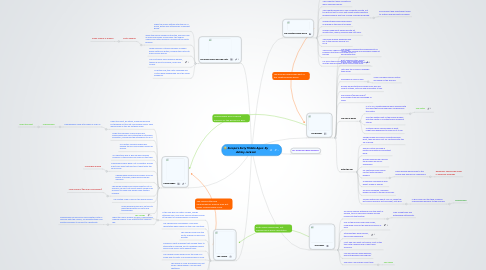
1. Charlemagne
1.1. Pepin the Short, his father, made himself king by throwing out the last Merovingian rulers. They were known as the "do-nothing" kings.
1.1.1. Charlemagne came into power in 768 C.E.
1.1.1.1. Charlemagne
1.1.1.1.1. Pepin the Short
1.2. Unlike the Germanic rulers before him, Charlemagne was very interested in rebuilding civilization, and he had the intelligence to do it.
1.3. His military success helped him expand the old Merovingian Empire all around.
1.4. On Christmas day in 800 he was crowned Emperor of the Romans by Pope Leo the third.
1.5. Carolingian Empire gave a lot of western Europe a rest from wars that had torn it apart after the fall of Rome.
1.5.1. Carolingian Empire
1.6. Charlemagne governed his empire from his palace at Aachen, which would now be Germany.
1.7. Though he allowed local governments a lot of freedom, he sent out secret agents called Missi Dominici to make sure people were treated properly.
1.7.1. Missi Dominici (the lord's messengers)
1.8. He created code of law for the whole empire.
1.9. Unlike people before him, he tried to make things better for serfs and tradespeople.
1.10. When the Saxon leaders refused, Charlemagne ordered soldiers to kill almost 4000 Saxons a day.
1.10.1. Charlemagne could also be cold-hearted. After a long war with the Saxons, He defeated them and insisted everyone to convert to Christianity.
2. The Anglo-Saxon and The Celts
2.1. While the Franks settled after the fall of Rome, Britain was attacked by a different group.
2.2. When the Roman soldiers left Britain, warriors from an area now known as Germany- the Angles Saxons and Jutes movied in. Driving out the Celtic peoples.
2.2.1. Celtic peoples
2.2.1.1. Anglo-Saxons or English
2.3. Large numbers of these Germanic invaders began settling in Britain, pushing the Celts into many various places.
2.4. The Celts were once powerful people, taking up most of Europe, Spain and Russia.
2.5. In Britain now, the Celtic language and culture have disappeared from the seven kingdoms.
3. The Vikings
3.1. In the year 855 on Easter Sunday, vikings attacked Paris, from from sea and striking a blow at the heart of Charlemagne's old empire.
3.1.1. The Vikings
3.2. The vikings were everywhere. Their wars devastated whole regions in the Low Countries.
3.3. The vikings came from the north, looking for glory and plunder.
3.4. Traveled in swift longships that allowed them to strike with no warning, and to disappear before rulers could raise a force against them.
3.5. The raiding forces ranged from the crew of a single ship to fleets of a hundred ships or more.
3.6. The peace of mind Europeans had, got under Charlemagne's rule and was shattered.
3.7. They were insanely destructive, especially in early raids.
4. The Mediterranean World
4.1. It was a transportation route that encouraged people to travel, this route cause a lot of trading.
4.2. Two important early civilizations were Greek and Rome.
4.3. The Mediterranean had a very moderate climate, not too hot but not to cold. That meant plants had good growing seasons and tons of food could be produced.
4.3.1. Environment had everything it need to sustain large amounts of people
4.4. Greeks studied philosophy which is defined as the pursuit of ideas.
4.5. Greeks made great advances with art, architecture, drama, medicine and lots more.
4.6. The Greek Empire weakened and fell to the Romans around 150 B.C.E
4.7. The Roman Legions were super powerful that they controlled most of Europe.
4.8. For more than six centuries, the Mediterranean and the Roman empire were one and the same.
5. The Romans
5.1. The Romans admired the achievements of Greek, they copied and developed Greek art and architecture.
5.2. Built amazing cities, arenas, public baths, theaters and more.
5.3. Latin was the common language they spoke.
5.4. Developed a code of laws.
5.4.1. Some Canadian laws of justice are based on the Romans.
5.5. Roman law protected all people from war and violent outlaws, both on land and pirates at sea.
5.6. Pax Romana (Roman peace) encouraged trade and exchange of ideas.
5.7. The Fall of Rome
5.7.1. In 410 C.E, mediterraneans were shocked with the news that Rome had been conquered by the Goths.
5.7.1.1. The Goths
5.7.2. Only the Eastern part of the Roman Empire, with the capital in Constantinople remained strong.
5.7.3. Historians have various ideas of what might have happened to Rome for it to fall.
5.8. After the Fall
5.8.1. Though Greek and Roman civilizations were great, they would be lost for centuries after the fall of Rome.
5.8.2. Roman culture survived in isolated monasteries and distant lands.
5.8.3. Europe experienced a period the Romans would call "Barbarous."
5.8.4. For centuries Rome was in contact with Germanic peoples.
5.8.4.1. These people were known to the Greeks and Romans as *Barbarians.
5.8.4.1.1. Barbarians: People who speak in unfamiliar language.
5.8.5. A Barbarian was anyone who wasn't Greek or Roman.
5.8.6. As Rome collapsed, Germanic peoples moved to Roman provinces.
5.8.7. Turmoil lasted from about 476 C.E, when the last Roman emperor lost his power, until 800.
5.8.7.1. In 800 Pope Leo the third crowned Charlemagne Emperor to the Romans.
5.8.7.1.1. Charlemagne
6. The Franks
6.1. As Roman legions withdrew from the West of Europe, tons of Germanic peoples moved moved into the territory.
6.1.1. They fought wars and established settlements.
6.2. One of the groups called The Franks, conquered much of the Roman province of Gaul.
6.3. Although they were farmers, they loved making war.
6.4. Most free men went out armed, most of the time with a special kind of axe called francisca.
6.5. Men and Women liked jewellery, and both genders had long hair.
6.6. The name "The Franks" meant free.
6.6.1. The Franks
